Consumption Goal

What are the most effective ways to reduce energy consumption in households ?
Reducing energy consumption in households is crucial for both environmental sustainability and cost savings. Here are some of the most effective ways to achieve this goal: 1. **Upgrade to Energy-Efficient Appliances** * Switch to appliances with an Energy Star rating, which use less energy while providing the same level of performance. * Consider investing in a smart thermostat that can automatically adjust the temperature based on your schedule and preferences. 2. **Improve Insulation and Air Sealing** * Ensure your home is well-insulated to minimize heat loss in winter and heat gain in summer. * Seal any air leaks around windows, doors, and other gaps to prevent drafts and improve energy efficiency. 3. **Optimize Lighting** * Replace traditional incandescent bulbs with LED or CFL bulbs, which use significantly less energy and have longer lifespans. * Install motion sensors or timers to automatically turn off lights when not needed. 4. **Use Energy-Efficient Water Heaters** * Consider upgrading to a tankless water heater, which only heats water as it's needed rather than storing it in a tank. * Insulate your existing water heater and pipes to reduce heat loss. 5. **Reduce Standby Power Consumption** * Unplug electronics when not in use or use a power strip with an on/off switch to easily cut off standby power. * Look for devices with low standby power consumption or opt for smart power management features. 6. **Implement Solar Power** * Install solar panels to generate renewable energy for your home, reducing reliance on grid electricity. * Use solar-powered outdoor lighting and other small appliances wherever possible. 7. **Be Mindful of Heating and Cooling** * Set your thermostat a few degrees lower in winter and higher in summer to save on heating and cooling costs. * Use ceiling fans or portable fans to circulate air and reduce the need for air conditioning. 8. **Maintain Your Home Efficiently** * Regularly clean and maintain your HVAC system, chimney, and other appliances to ensure they run efficiently. * Check for any potential issues like leaky faucets or running toilets that could waste water and energy. 9. **Cook Efficiently** * Use pressure cookers or microwaves for cooking, which can be more energy-efficient than traditional ovens. * Keep your refrigerator and freezer organized and avoid overloading them, allowing air to circulate more freely.
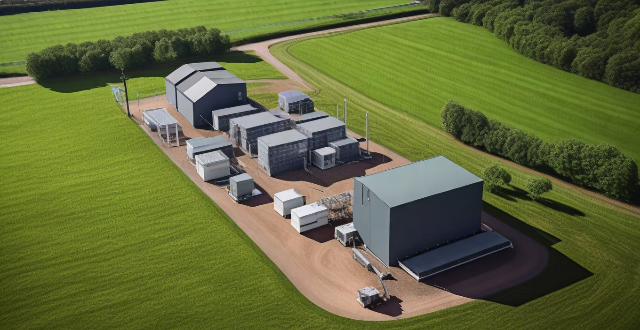
How efficient is a Compound Hybrid Electric Vehicle in terms of fuel consumption ?
Compound Hybrid Electric Vehicles (CHEVs) are efficient in terms of fuel consumption due to their dual power sources, regenerative braking, advanced energy management system, aerodynamic design, and weight reduction.

What are the benefits of sustainable consumption ?
The text discusses the benefits of sustainable consumption, which include environmental protection, economic benefits, social well-being, and ethical considerations. By making conscious choices about what we consume and how we dispose of our waste, we can reduce our carbon footprint, conserve natural resources, preserve biodiversity, save costs, create jobs, promote healthier lifestyles, ensure equitable distribution of resources, build community, protect animal welfare, support fair trade, and encourage transparency and accountability in businesses. Sustainable consumption is crucial for creating a more sustainable future for ourselves and future generations.

How can we promote sustainable consumption ?
Sustainable consumption is a key factor in achieving a sustainable future. It involves making conscious choices about the products we buy, the resources we use, and the impact we have on the environment. Here are some ways to promote sustainable consumption: 1. Education and Awareness: Raise awareness about the importance of sustainable consumption; provide information on sustainable products and services; encourage responsible consumption habits. 2. Government Policies and Incentives: Implement policies that support sustainable consumption; offer incentives for sustainable practices; encourage circular economy principles. 3. Corporate Responsibility and Innovation: Encourage corporate responsibility; foster innovation in sustainable products and services; collaborate with stakeholders. 4. Community Action and Collaboration: Organize community events; create networks of sustainable businesses; engage with schools and youth organizations. By taking these actions at individual, community, business, and government levels, we can collectively move toward a more sustainable future where our consumption patterns support rather than harm the planet.

How does ecological design address issues related to water management and consumption ?
Ecological design addresses water management and consumption issues through strategies such as rainwater harvesting, water recycling, using native plants in landscaping, installing efficient water fixtures, permeable paving, smart water management systems, and promoting education on water conservation.

What are the challenges to achieving sustainable consumption ?
The text discusses the various challenges to achieving sustainable consumption, including lack of awareness and education, economic barriers, cultural and social norms, infrastructure and accessibility issues, technological limitations, policy and regulatory challenges, business practices, and consumer behavior. It emphasizes the need for a multifaceted approach involving education, policy changes, technological advancements, and cultural shifts towards more sustainable consumption patterns to overcome these challenges and move towards a more sustainable future for all generations.

Can reducing meat consumption lower my carbon footprint ?
Reducing meat consumption can lower your carbon footprint by decreasing the demand for livestock, which produces greenhouse gases and requires significant resources. This dietary change also conserves water and land, improves health, and supports a more sustainable food system.

What role do consumers play in promoting sustainable consumption ?
The article explores the role of consumers in promoting sustainable consumption. It emphasizes the importance of education and awareness, reducing waste, reusing items, recycling materials, supporting sustainable businesses, and advocating for change as key strategies for consumers to contribute to sustainable consumption. The article highlights the significance of these strategies in reducing environmental impact and conserving resources for a more sustainable future.

What is the average fuel consumption of a typical fuel vehicle ?
The average fuel consumption of a typical fuel vehicle can vary depending on several factors such as the type of vehicle, driving conditions, and maintenance. However, we can provide a general overview of the fuel consumption rates for different types of vehicles: - Small cars typically have better fuel efficiency than larger vehicles, with an average fuel consumption of around 6-8 liters per 100 kilometers (L/100km). - Midsize cars usually have slightly higher fuel consumption rates compared to small cars, with an average fuel consumption of around 8-10 L/100km. - Large cars generally have higher fuel consumption rates due to their larger size and weight, with an average fuel consumption of around 10-12 L/100km. - Small SUVs are becoming increasingly popular and offer relatively good fuel efficiency, with an average fuel consumption of around 9-11 L/100km. - Midsize SUVs are larger and heavier than small SUVs, resulting in higher fuel consumption rates, with an average fuel consumption of around 11-13 L/100km. - Large SUVs are the largest and heaviest vehicles in this category, leading to higher fuel consumption rates, with an average fuel consumption of around 13-15 L/100km. - Light duty pickups are designed for carrying light loads and offer reasonable fuel efficiency, with an average fuel consumption of around 12-14 L/100km. - Medium duty pickups are larger and more powerful than light duty pickups, resulting in higher fuel consumption rates, with an average fuel consumption of around 14-16 L/100km. - Heavy duty pickups are designed for heavy-duty tasks and have the highest fuel consumption rates among pickup trucks, with an average fuel consumption of around 16-18 L/100km. It's important to note that these figures are just estimates and actual fuel consumption can vary based on individual driving habits, vehicle condition, and other factors. Additionally, newer vehicles with advanced technology may have lower fuel consumption rates than older models.

What is the impact of smart manufacturing on industrial energy consumption ?
Smart manufacturing, or Industry 4.0, is transforming industrial operations through AI, IoT, and robotics to boost efficiency and sustainability. One major benefit is its impact on reducing energy consumption in industries. This article discusses how smart manufacturing can aid in decreasing energy usage: 1. **Optimization of Production Processes**: Real-time data analytics and predictive maintenance techniques lead to less energy waste and higher efficiency. Sensors monitor equipment performance to reduce downtime and energy consumption during repairs. 2. **Automation and Robotics**: Replacing manual labor with automated machines and robots results in higher precision and consistency while minimizing energy usage. Smart technologies also enable better resource allocation for reduced energy consumption. 3. **Energy Management Systems (EMS)**: EMS are crucial for monitoring and controlling energy consumption. They provide insights into energy usage patterns, allowing companies to identify areas where energy savings can be achieved. Implementing energy-saving measures based on EMS data can significantly cut energy consumption and costs. 4. **Renewable Energy Sources**: Smart manufacturing promotes the use of renewable energy sources like solar and wind power to reduce dependence on non-renewable sources like fossil fuels. This contributes to environmental sustainability by lowering greenhouse gas emissions. Integrating smart grids into industrial facilities further optimizes energy distribution and enhances efficiency. Overall, smart manufacturing significantly impacts industrial energy consumption by optimizing production processes, incorporating automation and robotics, implementing energy management systems, and promoting renewable energy sources. These advancements not only reduce energy waste but also contribute to environmental sustainability by lowering greenhouse gas emissions.

How does sustainable consumption affect the environment ?
Sustainable consumption positively affects the environment by reducing waste, conserving resources, and promoting biodiversity.
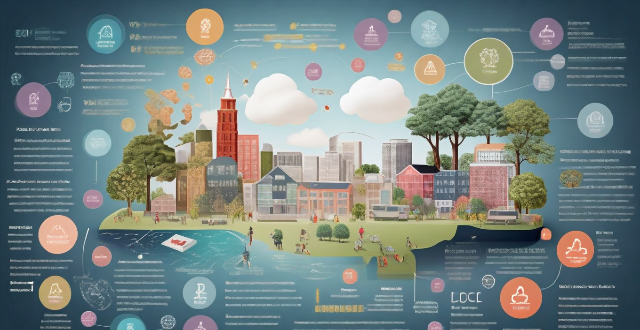
What is the relationship between climate goals and sustainable development goals (SDGs) ?
The relationship between climate goals and sustainable development goals (SDGs) is crucial for addressing global challenges and promoting a more equitable and sustainable future. Both sets of objectives are interdependent and mutually reinforcing, with climate goals often serving as a foundation for achieving SDGs. Efforts to combat climate change can help preserve ecosystems, transition to clean energy sources, and invest in resilient infrastructure, directly supporting various SDGs. Conversely, achieving SDGs such as poverty alleviation, education, and sustainable consumption can indirectly contribute to climate goals by reducing dependence on environmentally harmful practices and promoting responsible consumption patterns. Integrated approaches that ensure policy coherence, align financial flows, and engage multi-stakeholder collaboration can amplify the impact of both sets of goals. Shared benefits include improved health and well-being, economic growth, and social inclusion. Recognizing the interconnection between climate goals and SDGs is essential for harnessing the full potential of collective efforts towards a sustainable future.

Who are some of the top goal scorers in this year's football season ?
This year's football season has seen exceptional performances from players across the globe, with Erling Haaland, Lionel Messi, Karim Benzema, Cristiano Ronaldo, and Robert Lewandowski leading the pack as top goal scorers. These players have not only showcased their individual talents but also played a crucial role in their teams' successes throughout the season.

What measures can be taken to reduce agricultural water consumption ?
Agriculture is the largest consumer of water worldwide, accounting for approximately 70% of global freshwater withdrawals. Reducing agricultural water consumption is crucial for sustainable water management and food security. Here are some measures that can be taken to achieve this goal: 1. **Improved Irrigation Systems** - Drip irrigation delivers water directly to the root zone of plants, reducing waste through evaporation and runoff. - Sprinkler irrigation uses pipes or hoses to spray water over crops, allowing more precise control than surface methods. - Micro-irrigation includes drip tapes and micro-sprayers, which apply water slowly and directly to plant roots. 2. **Water-Saving Technologies** - Soil moisture sensors help farmers determine when and how much to irrigate based on soil moisture levels. - Weather stations provide data on rainfall, temperature, and humidity, enabling farmers to adjust irrigation schedules accordingly. - Automated control systems allow for real-time adjustments in irrigation based on sensor information. 3. **Efficient Crop Management** - Crop rotation helps maintain soil health and reduces water demand by alternating between high and low water-consuming crops. - Planting cover crops protects soil from erosion and improves its ability to retain moisture. - Intercropping leads to efficient use of resources, including water. 4. **Soil Health Management** - Composting adds organic matter, improving soil structure and making it better at holding water. - Minimal tillage helps maintain soil structure, reducing water loss through evaporation. - Mulching covers soil with layers of organic material, conserving moisture by reducing evaporation. 5. **Water Pricing and Policies** - Volumetric pricing encourages conservation among farmers by charging for water based on actual usage. - Subsidies for water-saving technologies promote adoption of water-efficient practices. - Regulations limiting excessive water extraction can drive efficiency improvements. 6. **Rainwater Harvesting** - Catchment systems collect rainwater from roofs or other surfaces for later use in irrigation. - Berms and swales divert runoff into fields or storage areas for future irrigation needs. 7. **Education and Training** - Extension programs provide farmers with knowledge about water-saving techniques through workshops and demonstrations. - Farmer field schools offer hands-on training sessions where farmers learn best practices directly in their fields. 8. **Genetic Improvement of Crops** - Drought-resistant varieties develop crop varieties that require less water without sacrificing yield. - Breeding programs enhance crops through selective breeding to increase their water use efficiency. 9. **Integrated Pest Management (IPM)** - Biological control methods reduce the need for water-intensive pesticide applications using natural predators. - Cultural practices like crop rotation and intercropping also help control pests naturally. 10. **Land Leveling** - Terrace construction on sloping lands helps retain water and prevent runoff. - Land leveling equipment ensures even water distribution during irrigation. By implementing these measures, agriculture can become more water-efficient, ensuring there is enough water available for both current and future generations while maintaining agricultural productivity.

How does climate governance affect sustainable development goals ?
Climate governance plays a pivotal role in shaping the achievement of sustainable development goals (SDGs). The interconnectedness between environmental preservation and socio-economic advancement necessitates a comprehensive understanding of how climate policies and actions influence the broader spectrum of global development objectives. ## **Impact on Individual SDGs** ### *Goal 2: Zero Hunger* Climate governance directly influences food security by addressing factors such as droughts, floods, and temperature fluctuations that can disrupt agricultural productivity. Effective climate policies can help to: - Ensure stable crop yields through improved irrigation systems and drought-resistant crops. - Mitigate the effects of extreme weather conditions on farming communities. - Promote sustainable land use practices to prevent soil degradation. ### *Goal 7: Affordable and Clean Energy* The transition towards renewable energy sources is at the heart of both climate governance and sustainable energy goals. Policies that encourage the adoption of clean energy technologies contribute to: - Reducing greenhouse gas emissions associated with traditional fossil fuel consumption. - Increasing access to electricity in off-grid areas using solar or wind power. - Creating new economic opportunities in the renewable energy sector. ### *Goal 13: Climate Action* This goal is inherently linked to climate governance, as it calls for urgent action to combat climate change and its impacts. Efficient climate policies can lead to: - Implementation of emission reduction strategies. - Enhanced resilience to natural disasters. - Promotion of environmentally friendly industries and jobs. ## **Cross-Cutting Impacts** ### Health and Well-being Climate governance affects public health outcomes by addressing air quality issues and reducing exposure to extreme weather events. This contributes to achieving: - **Goal 3: Good Health and Well-being** by minimizing climate-related health risks. ### Economic Growth Policies that foster green economies and low-carbon development pathways are crucial for: - **Goal 8: Decent Work and Economic Growth** by creating sustainable job opportunities. - **Goal 9: Industry, Innovation, and Infrastructure** through investment in green technology and infrastructure. ### Social Equity Climate governance also has implications for social equity and inclusion, particularly when considering the disproportionate impacts on vulnerable populations: - **Goal 10: Reduced Inequalities** by ensuring that climate adaptation and mitigation efforts do not marginalize already disadvantaged groups. ## **Conclusion** In conclusion, climate governance is an integral component of advancing sustainable development goals. By prioritizing climate action, nations can make strides in eradicating poverty, achieving food security, promoting health and well-being, and fostering economic growth while protecting the planet for future generations. The synergistic relationship between climate governance and the SDGs underscores the necessity for integrated policy approaches that consider environmental sustainability alongside social and economic development.

Why is sustainable consumption important ?
Sustainable consumption is crucial for preserving resources, protecting the environment, promoting economic growth, fulfilling social responsibilities, and addressing global challenges. By making conscious choices about what we consume and how we consume it, we can create a more sustainable future for all.

How can governments encourage sustainable consumption ?
Governments can encourage sustainable consumption through public awareness campaigns, regulations and laws, incentives and subsidies, investment in infrastructure, and research and development. These strategies aim to educate citizens, mandate eco-friendly practices, provide financial support for sustainable technologies, improve public transportation and waste management facilities, and create innovative solutions for a more sustainable future.

How does sustainable consumption impact the economy ?
Reduced resource depletion, lower energy costs, increased innovation, and improved public health are some of the key benefits of sustainable consumption. While there may be short-term costs associated with transitioning to more sustainable practices, the long-term benefits far outweigh these costs.

What are the 17 Sustainable Development Goals (SDGs) and what do they aim to achieve ?
The text describes the 17 Sustainable Development Goals (SDGs) and their objectives. The goals are: No Poverty, Zero Hunger, Good Health and Well-being, Quality Education, Gender Equality, Clean Water and Sanitation, Affordable and Clean Energy, Decent Work and Economic Growth, Industry, Innovation, and Infrastructure, Reduced Inequalities, Sustainable Cities and Communities, Responsible Consumption and Production, Climate Action, Life Below Water, Life on Land, Peace, Justice, and Strong Institutions, and Partnerships for the Goals. Each goal has specific objectives that aim to end poverty, protect the planet, and ensure all people enjoy peace and prosperity by 2030.

How can businesses contribute to sustainable consumption ?
Businesses can contribute to sustainable consumption by adopting circular economy principles, managing green supply chains, using eco-friendly packaging, practicing product stewardship, improving energy efficiency, conserving water, engaging in responsible marketing, promoting innovation, engaging stakeholders, and supporting environmental initiatives. These practices help reduce waste, minimize resource use, and inspire sustainable consumer behavior.
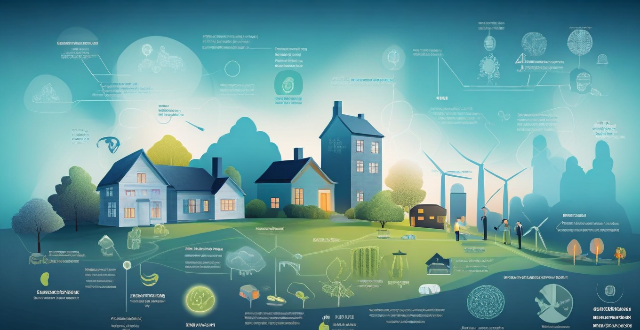
How can IoT help in reducing energy consumption ?
The Internet of Things (IoT) can help reduce energy consumption by providing real-time data and insights into how energy is being used. Smart homes, energy monitoring systems, predictive maintenance programs, optimized resource allocation strategies, and transportation optimization solutions are some ways in which IoT can help reduce energy consumption. By implementing these solutions, we can reduce our carbon footprint and save money on our energy bills.
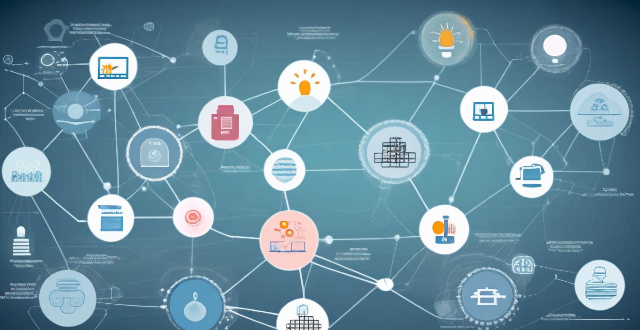
How does Climate-Smart Technology impact energy consumption ?
Climate-smart technology has a significant impact on energy consumption by improving efficiency, promoting renewable sources of energy, reducing waste, and encouraging sustainable practices in transportation and industry. By embracing these technologies and practices, we can create a more sustainable future for ourselves and future generations.

Can using energy-efficient appliances help cut down electricity consumption ?
Energy-efficient appliances can help cut down electricity consumption by using less power than traditional counterparts, leading to cost savings and environmental benefits. Examples include LED light bulbs, smart thermostats, and energy star certified refrigerators.

How can we reduce energy consumption in households ?
Reducing energy consumption in households is crucial for saving money and promoting environmental sustainability. Effective methods include switching to energy-efficient appliances, improving insulation, using LED lighting, optimizing heating and cooling, saving water, unplugging electronics, utilizing natural lighting and ventilation, cooking efficiently, and adopting energy-saving habits in laundry and cleaning. Educating family members and monitoring energy usage are also key steps towards reducing a household's energy consumption.

Is there a connection between caffeine intake and sleep difficulties ?
The article discusses the connection between caffeine intake and sleep difficulties, highlighting factors such as individual sensitivity, timing of consumption, and the amount consumed. It explains how caffeine works in the body to increase alertness and reduces feelings of fatigue by blocking adenosine receptors. The article also outlines the effects of caffeine on sleep, including difficulty falling asleep, reduced deep sleep, frequent awakenings, and shortened REM sleep. To manage caffeine intake for better sleep, the article suggests limiting caffeine intake, avoiding late-day consumption, creating a bedtime routine, and monitoring personal response to caffeine.
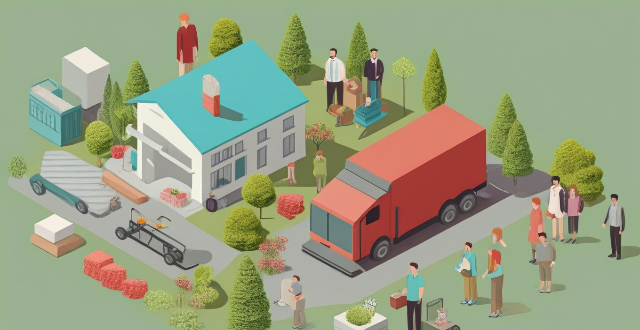
What impact does energy-efficient transportation have on reducing fuel consumption ?
Energy-efficient transportation has a significant impact on reducing fuel consumption, which can lead to numerous benefits for the environment, economy, and society as a whole. These benefits include improved fuel efficiency, lower emissions, increased energy security, health benefits, and environmental conservation. By using vehicles and systems designed to minimize energy usage while maximizing performance, individuals and organizations can reduce their fuel consumption and save money on fuel costs over time. Additionally, reducing fuel consumption can lead to lower emissions of harmful pollutants and greenhouse gases, improving air quality and mitigating the effects of climate change. Investing in energy-efficient transportation can create new jobs and stimulate economic growth in industries related to clean energy and technology. Improving air quality through reduced emissions from energy-efficient transportation can have significant health benefits for people living in urban areas, reducing healthcare costs associated with treating respiratory problems and heart disease. Finally, reducing fuel consumption through energy-efficient transportation can help to conserve natural resources and protect ecosystems, preserving them for future generations.

What is the relationship between climate change, energy consumption, and transportation policies ?
Climate change, energy consumption, and transportation policies are interconnected in complex ways. Reducing energy consumption is critical for mitigating climate change, and transportation policies that promote energy efficiency and alternative fuels can have a significant impact on reducing energy consumption. Additionally, investing in sustainable transportation infrastructure can further reduce greenhouse gas emissions by providing more sustainable options for people to get around.

How have building energy efficiency standards evolved over time ?
The evolution of building energy efficiency standards has been significant over the years, with a focus on reducing energy consumption and environmental impact. Early beginnings saw little consideration for energy consumption, leading to high utility bills and greenhouse gas emissions. The rise of energy conservation in the 1970s led to the development of the first building energy efficiency standards, focusing on measures such as improved insulation and efficient heating and cooling systems. The advent of green buildings in the 1990s brought new standards that minimized environmental impact through the use of renewable energy sources and sustainable materials. Technology has played a significant role in improving energy efficiency, with advances such as smart thermostats and LED lighting. Looking to the future, there is likely to be a greater emphasis on reducing energy consumption in buildings, leading to stricter standards and the development of new technologies. Overall, building energy efficiency standards have evolved to become an essential part of modern building design and construction.

How do scientists predict the impact of regular space travel on the environment ?
Scientists predict the environmental impact of regular space travel by considering various factors such as greenhouse gas emissions, waste generation, and resource consumption. They use computer models, simulations, and experimental data to estimate potential effects on Earth's ecosystems. Greenhouse Gas Emissions: Launching rockets requires a significant amount of fuel, leading to high CO2 emissions. Powering spacecraft and supporting infrastructure also contributes to increased energy consumption and CO2 emissions. Waste Generation: Astronauts generate solid waste during their missions, which needs proper disposal to avoid pollution. Spent rocket stages can cause debris in orbit or harm wildlife if they fall back to Earth uncontrolled. Resource Consumption: Regular space travel requires a substantial amount of resources, including water, food, and materials for building spacecraft and infrastructure. This leads to increased demand and potential stress on freshwater sources, soil degradation, loss of biodiversity, and environmental damage due to material extraction. Mitigating Strategies: To address the environmental concerns associated with regular space travel, scientists propose strategies like developing efficient propulsion systems, using renewable energy sources, implementing waste reduction techniques, and promoting sustainable resource management practices.

How do smart living gadgets contribute to energy efficiency in homes ?
Smart living gadgets play a significant role in enhancing energy efficiency in homes. They automate and optimize household operations, resulting in reduced energy consumption and lower utility bills. Smart thermostats allow remote control of heating and cooling systems, while smart light bulbs can be controlled remotely and set to turn on/off automatically. Smart plugs and power strips monitor and control power consumption of appliances, reducing standby power waste. Smart water heaters optimize hot water production based on demand, reducing unnecessary energy consumption. Adopting these devices can help homeowners reduce energy consumption, lower utility bills, and contribute to a more sustainable future.